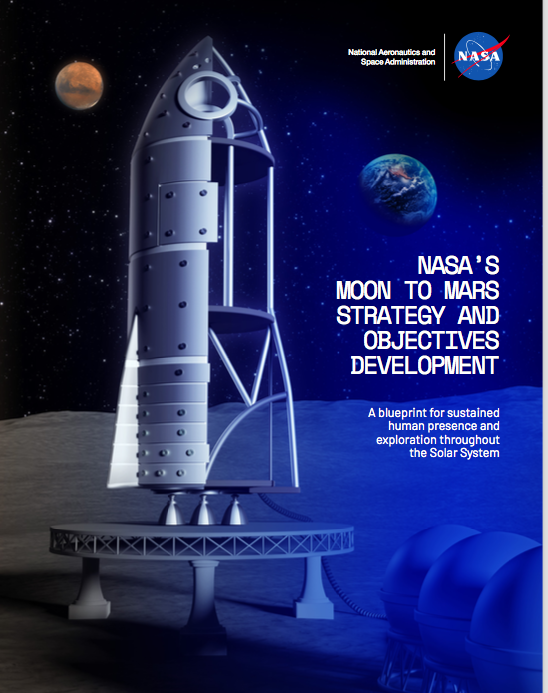
International and commercial partners interested in joining U.S. efforts to expand human activities beyond low Earth orbit (LEO) should step up development of power infrastructure, communications and navigation systems, environmental mitigation techniques, robotics and other technologies, NASA said on April 18 as it released a refined Moon-to-Mars exploration strategy.
“Our goal is to create a blueprint for sustained human presence and exploration throughout the Solar System,” NASA Deputy Administrator Pam Melroy said during a keynote speech at the 38th Space Symposium underway in Colorado Springs this week.
NASA last year unveiled a plan to parlay lunar exploration and development—in close partnership with other nations and commercial companies—into a framework for expanding human presence to Mars and eventually other destinations in the Solar System.
On April 18, the agency released the first in what is planned to be annually updated Architecture Concept Reviews (ACR) that aim to incorporate new technological capabilities and evolving objectives in the exploration strategy.
The idea is to “link our current activities to the objectives and to lay out a framework for the Moon-to-Mars exploration architecture that translates those objectives into a durable path,” Melroy said.
“We’re really at a historical pivot point,” she explained. “Industry has proven its ability to do things that once were the province of governments, and it’s now extending our space economy from low Earth orbit all the way to cislunar space.
“Our global partners also seek to explore the Moon ... and we’re also going with public-private partnerships with industry,” Melroy said.
The 2022 ACR includes a 160-page architecture definition document and six supporting white papers which discuss some of the technical trades and assumptions buttressing key elements of the plan.
“Our Moon-to-Mars architecture has been organized into segments that are identified by notional missions or integrated-use cases [that] correspond to increasing system and mission scope,” Melroy said. “That allows our teams to break the architecture down into manageable chunks and coordinate with partners.”
The plan begins with human return to the Moon under the Artemis program, which kicked off last year with the Artemis I uncrewed flight test of NASA’s heavy-lift Space Launch System rocket and Orion capsule. That is to be followed by the Artemis II crewed flight test around the Moon, currently targeted for November 2024.
With Artemis III, NASA aims to land astronauts on the Moon’s surface for the first time since 1972 when the Apollo lunar program ended.
The ACR is not a mission manifest or an acquisition wish list. Rather, it is intended to be a guidebook for human exploration beyond LEO and what technologies and services are envisioned to support the effort.
For example, the 2022 ACR outlines the following technical areas for collaboration:
• Power infrastructure and distribution
• Communication and navigation
• Lunar environment mitigation
• Robotics and mobility
• Logistics
• Utilization operations
• Lunar sampling and curation
• Habitation and crew health systems
• Exploration systems and operations analog testing
A summary of the report can be found online.





